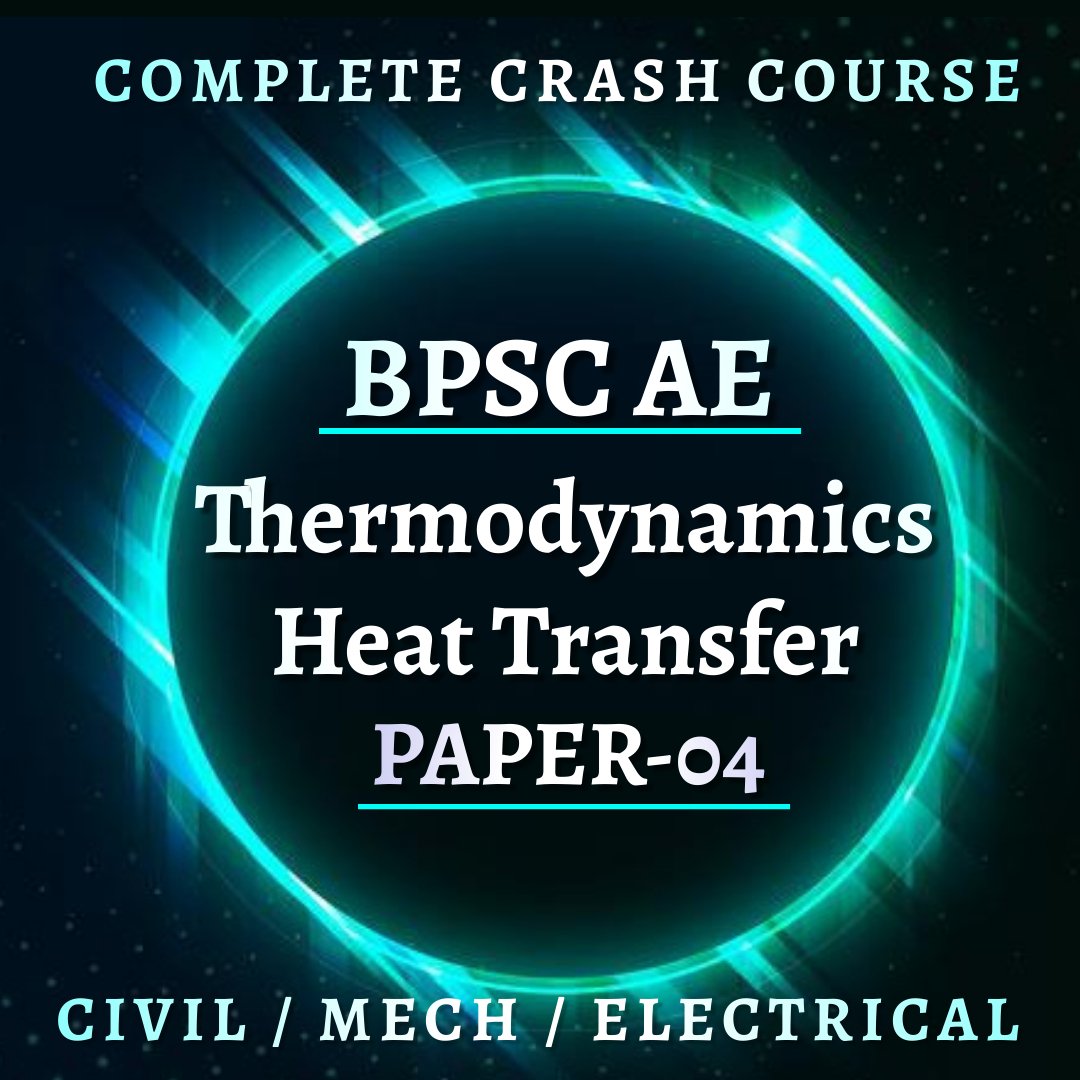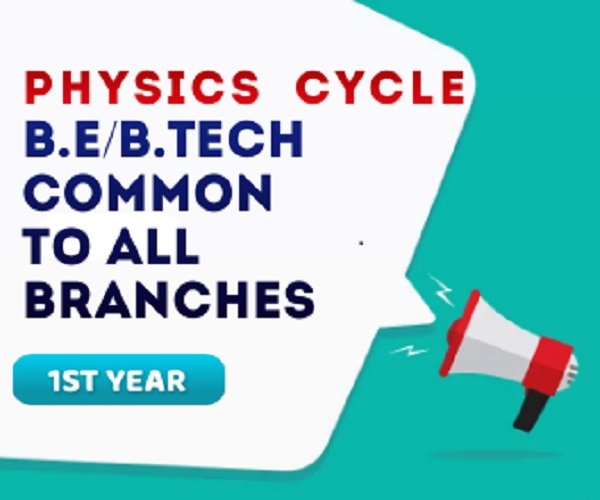- Engineering Physics
- Basic Electrical Engineering
- Programming for Problem Solving
- Engineering Mathematics-I
- Engineering Mathematics-II
-
BASICS OF ELECTRICAL 00:32:08
-
KCL 00:20:30
- Engineering 1st Year (Civil Engineering, Chemical Engineering, Computer Science, Electrical Engineering, Electronics Engineering, Mechanical Engineering, Textile Engineering)
Welcome! We are here to help you prepare and pass the university semester exam
This course is great for undergraduate engineering students who feel a little lost in their subjects
We start from scratch, establish the basics and build from there.
More advanced engineering students who want a refresher or didn't quite grasp the fundamentals for the first time around would also benefit from this course.
If you're about to start an engineering program, this course is a great way to get a head start.
If you're a structures genius already, this course is probably not for you.
----------------------------------------------------------------------------------------------------------------------------------------------------------------------------------------------
In this course, we'll cover fundamental concepts and Starting with the very basics to advance, worked examples are used extensively to demonstrate the practical application of theory.
This course is exclusively designed for the examination conducted by universities in different streams for the semester examination (Civil, Mechanical, Electrical, Computer Science, Information Science & Chemical Engineering). The total duration of the course is variable and the classes are conducted either live or recorded lectures. During classes, the students will be provided with exposure to the latest syllabus and pattern of the examination with a core focus will be to enhance concepts of topics that are covered in the examination syllabus. Special emphasis will be laid on improving the problem-solving ability of the students by providing complimentary test series to the enrolled students in the course.
Syllabus
ENGINEERING PHYSICS
I Relativistic Mechanics: Frame of reference, Inertial & non-inertial frames, Galilean transformations, Michelson- Morley experiment, Postulates of the special theory of relativity, Lorentz transformations, Length contraction, Time dilation, Velocity addition theorem, Variation of mass with velocity, Einstein‟s mass-energy relation, Relativistic relation between energy and momentum, Massless particle.
II Electromagnetic Field Theory: Continuity equation for current density, Displacement current, Modifying equation for the curl of the magnetic field to satisfy continuity equation, Maxwell‟s equations in vacuum and in non conducting medium, Energy in an electromagnetic field, Poynting vector and Poynting theorem, Plane electromagnetic waves in vacuum and their transverse nature. Relation between electric and magnetic fields of an electromagnetic wave, Energy and momentum carried by electromagnetic waves, Resultant pressure, Skin depth.
III Quantum Mechanics: Black body radiation, Stefan‟s law, Wien‟s law, Rayleigh-Jeans law and Planck‟s law, Wave-particle duality, Matter waves, Time-dependent and time-independent Schrodinger wave equation, Born interpretation of wave function, Solution to the stationary state Schrodinger wave equation for a one-Dimensional particle in a box, Compton effect.
IV Wave Optics: Coherent sources, Interference in uniform and wedge-shaped thin films, Necessity of extended sources, Newton’s Rings and its applications. Fraunhofer diffraction at the single slit and at the double slit, absent spectra, Diffraction grating, Spectra with grating, Dispersive power, Resolving power of grating, Rayleigh‟s criterion of the resolution, Resolving power of grating.
V Fibre Optics & Laser: Introduction to fibre optics, Acceptance angle, Numerical aperture, Normalized frequency, Classification of fibre, Attenuation and Dispersion in optical fibres. Laser Absorption of radiation, Spontaneous and stimulated emission of radiation, Einstein‟s coefficients, Population inversion, Various levels of Laser, Ruby Laser, He-Ne Laser, Laser applications.
ELECTRICAL ENGINEERING
I DC Circuits: Electrical circuit elements (R, L and C), Concept of active and passive elements, voltage and current sources, the concept of linearity and linear network, unilateral and bilateral elements, Kirchhoff‟s laws, Loop
and nodal methods of analysis, Star-delta transformation, Superposition theorem, Thevenin theorem, Norton theorem.
II Steady-State: Analysis of Single Phase AC Circuits: Representation of Sinusoidal waveforms – Average and effective values, Form and peak factors, Concept of phasors, phasor representation of sinusoidal varying voltage and current. Analysis of single-phase AC Circuits consisting of R, L, C, RL, RC, RLC combinations (Series and Parallel), Apparent, active & reactive power, Power factor, power factor improvement. Concept of Resonance in series & parallel circuits, bandwidth and quality factor. Three-phase balanced circuits, voltage and current relations in star and delta connections.
III Transformers: Magnetic materials, BH characteristics, ideal and practical transformer, equivalent circuit, losses in transformers, regulation and efficiency. Auto-transformer and three-phase transformer connections.
IV Electrical machines: DC machines: Principle & Construction, Types, EMF equation of generator and torque equation of motor, applications of DC motors (simple numerical problems) Three Phase Induction Motor: Principle & Construction, Types, Sliptorque characteristics, Applications (Numerical problems related to slip only) Single Phase Induction motor: Principle of operation and introduction to methods of starting, applications. Three Phase Synchronous Machines: Principle of operation of the alternator and synchronous motor and their applications.
V Electrical Installations: Components of LT Switchgear: Switch Fuse Unit (SFU), MCB, ELCB, MCCB, Types of Wires and Cables, Importance of earthing. Types of Batteries, Important characteristics for Batteries. Elementary calculations for energy consumption and savings, battery backup.
ENGINEERING MATHEMATICS- I
I Matrices: Types of Matrices: Symmetric, Skew-symmetric and Orthogonal Matrices; Complex Matrices, Inverse and Rank of the matrix using elementary transformations, Rank-Nullity theorem; System of linear equations, Characteristic equation, Cayley-Hamilton Theorem and its application, Eigenvalues and eigenvectors; Diagonalisation of a Matrix
II Differential Calculus- I: Introduction to limits, continuity and differentiability, Rolle’s Theorem, Lagrange’s Mean value theorem and Cauchy mean value theorem, Successive Differentiation (nth order derivatives), Leibnitz theorem and its application, Envelope of a family of one and two-parameter, Curve tracing: Cartesian and Polar co-ordinates
III Differential Calculus-II: Partial derivatives, Total derivative, Euler’s Theorem for homogeneous functions, Taylor and Maclaurin’s theorems for a function of two variables, Maxima and Minima of functions of several variables, Lagrange Method of Multipliers, Jacobians, Approximation of errors
IV Multivariable Calculus-I: Multiple integrations: Double integral, Triple integrals, Change of the order of integration, Change of variables, Application: Areas and volumes, Center of mass and centre of gravity (Constant and variable densities)
V Vector Calculus: Vector identities (without proof), Vector differentiation: Gradient, Curl and Divergence and their Physical interpretation, Directional derivatives. Vector Integration: Line integral, Surface integral, Volume integral, Gauss’s Divergence theorem, Green’s theorem and Stoke’s theorem (without proof) and their applications
ENGINEERING MATHEMATICS II
I Ordinary Differential Equation of Higher Order: Linear differential equation of nth order with constant coefficients, Simultaneous linear differential equations, Second-order linear differential equations with variable coefficients, Solution by changing independent variable, Reduction of order, Normal form, Method of variation of parameters, Cauchy-Euler equation.
II Multivariable Calculus-II: Introduction of Improper integrals, Beta & Gama function and their properties, Dirichlet’s integral and its applications, Application of definite integrals to evaluate surface areas and volume of revolutions.
III Sequences and Series: Definition of Sequence and series with examples, Convergence of sequence and series, Tests for convergence of series, (Ratio test, D’ Alembert’s test, Raabe’s test). Fourier series, Half range Fourier sine and cosine series.
IV Complex Variable–Differentiation: Limit, Continuity and differentiability, Functions of a complex variable, Analytic functions, Cauchy- Riemann equations (Cartesian and Polar form), Harmonic function, Method to find Analytic functions, Conformal mapping, Mobius transformation and their properties.
V Complex Variable –Integration: Complex integrals, Contour integrals, Cauchy- Integral theorem, Cauchy integral formula, Taylor’s and Laurent’s series (without proof), Singularities, Classification of Singularities, zeros of analytic functions, Residues, Methods of finding residues, Cauchy Residue theorem, Evaluation of real integrals of the types
This course is also helpful to GATE & UPSC ESE

- 34 Reviews
- 196 Students
- 37 Courses
-
 Fri, 03-Dec-2021A M king A M kingGood ????
Fri, 03-Dec-2021A M king A M kingGood ????






Write a public review